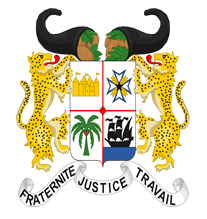Benin: Government
Key Figures
- Chief of State:
- President Patrice Talon
- Head of Government:
- President Patrice Talon
Overview
- Government Name:
- Republic of Benin
- Constitution:
- Adopted: 1990; Establishes the state and the sovereign, determines rights and duties of the individual, creates the branches of government, discusses treaties and international agreements, and allows for the revision of the constitution.
- Government Type:
- Republic

Index of Economic Freedom
Country Risk Rating
Government Branches
| Main Powers | Election Process | Election Cycle 1 | |
|---|---|---|---|
| Executive | The president provides authority over the cabinet of ministers which serves to advise and help formulate strategies. |
The president is elected by an absolute majority vote through a two-round system. |
5 years |
| Judicial | The supreme court has the highest level of jurisdiction in legal matters and checks on the executive branch, also acting in a consultative role. The High Court of Justice is made up of members of the constitutional court, parliament, and the president of the supreme court. It is the sole court able to judge the president. |
The supreme court president and judges are appointed by the national president upon the advice of the national assembly. For the constitutional court, 4 members are appointed by the national assembly and 3 members are appointed by the national president. The High Court of Justice "other" members are elected by the national assembly. |
5-year terms |
| Legislative | The national assembly serves as the parliament and primary legislative body of Benin. It exercises legislative power and oversight authority over government action. The constitutional court allows private citizens to challenge the government. |
The national assembly is made up of 109 members who are elected through a closed-list proportional representation system. |
5 years after the current members terms ends |
Regional Trade Blocs
International Organization Participation [2]
Environmental Agreements [3]
Tax Information [2]
- Tax Authority:
- Information not available
- Tax Name:
- Information not available
Sources:
- ElectionGuide http://www.electionguide.org/
- EY, http://www.ey.com
- CIA World Factbook, https://www.cia.gov/the-world-factbook/
- U.S. Bilateral Relations Fact Sheets http://www.state.gov/r/pa/ei/bgn/


